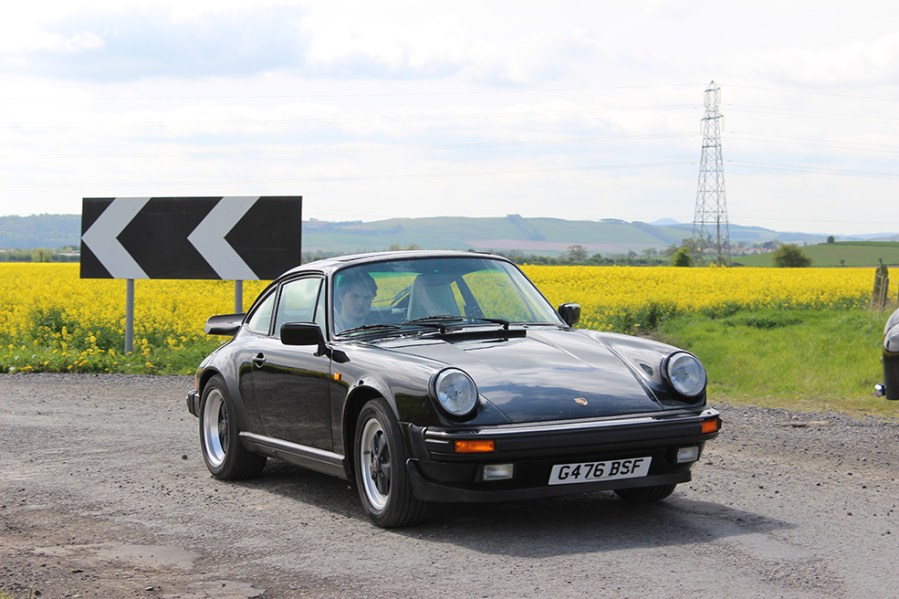The Porsche 911 has been through many iterations over the past 60 years but hit a real high point in Carrera 3.2 form. Here’s how to buy one
The 911 has been with us for 60 years, and in that time Porsche has provided enthusiasts with a model range that’s moved from the tradition of air-cooling to the latest, bombastically-fast water-cooled supercars.
The end of the 1980s saw something of a revolution as the legendary sports car offered greater modernity in the shape of the 964, but prior to that was the car we are concentrating on here. Launched in 1984, the Porsche 911 Carrera 3.2 was very much of the old-school, although it was the first 911 to feature ECU-controlled fuelling and ignition.
The heavily reworked flat-six engine boasted a healthy 231bhp – a useful increase over the preceding 3.0 SC – and performance was suitably impressive, with 0-60mph sorted in 6.1 seconds and a 152mph top speed.
Available in coupe, cabriolet and Targa form along with the rare Speedster, the 911 Carrera 3.2 proved hugely popular with just over 73,000 made. In the age of the yuppie the 3.2 epitomised the 911 for many thanks to its combination of healthy performance, old-911 charm and exciting styling; it’s no wonder that it remains as desirable as ever thirty five years after production ended.
The traditional driving experience and general lack of complication is certainly appealing, but as with any older 911 it pays to keep caution in mind. A rash purchase has the potential for big bills – but a good one will prove immensely rewarding.

Bodywork
Bodywork is by far the most important aspect when it comes to buying any old 911; if there’s any doubt about condition or provenance then a specialist inspection is highly recommended. Old 911s were once far more affordable than today, which meant that not all examples got the care they deserved. There’s the risk of cheap, sub-standard restoration and repair work to consider as a result.
Despite the 911’s galvanised bodyshell corrosion can ultimately take hold, so every inch of the bodywork should be inspected before committing to a purchase. Main rot-spots include the wings – both inner and outer – along with the A/B posts and the ‘kidney bowls’ that sit at the rear of the sills (the latter can be £2000+ to sort). Plenty of attention also needs to be paid to the condition of the cabin and front luggage compartment floors.
Bumper mountings can rot, while the aluminium bumpers themselves can corrode; ones that are past saving will cost four figures to replace.
Genuine replacement panels are pricey – a front wing is around £1200 – and when the cost of labour is factored in it’s easy to see how a major restoration can swallow tens of thousands of pounds.
On soft-top models, be sure to inspect the condition and operation of the cabriolet hood. Targa examples can suffer from water ingress caused by perished roof seals and the panel itself is very expensive to replace if damaged.
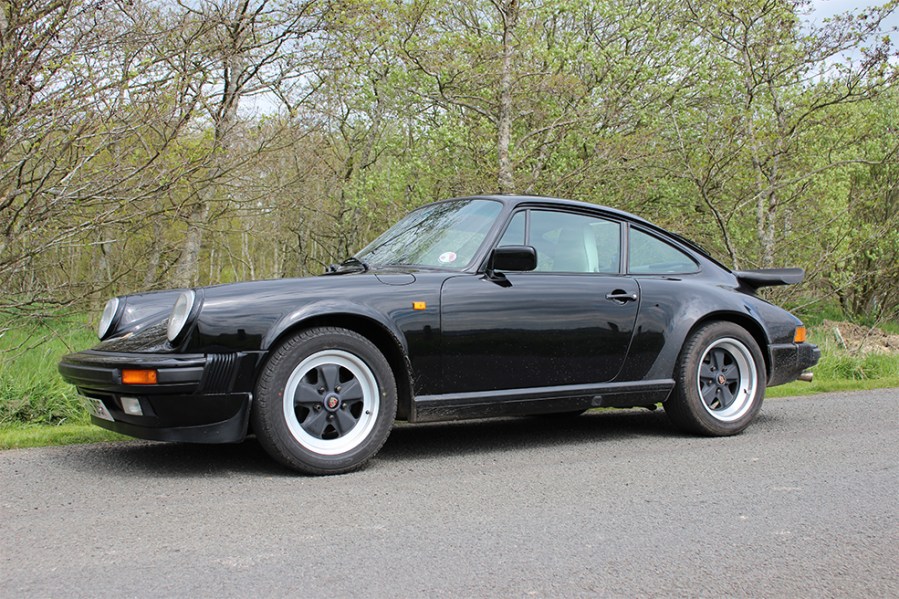
Engine and transmission
The air-cooled flat-six in the Carrera 3.2 might have seemed like more of the same when it arrived, but Porsche treated it to a major overhaul for the new model. Alongside the increase in capacity there were new pistons, revised induction and exhaust systems, a swap from mechanical to hydraulic timing chain tensioners, and the new Bosch Motronic 2 engine management system. The result was more power, improved efficiency and an engine that was both characterful and robust.
Careful maintenance should allow 200,000 miles with ease before an overhaul is needed; it could be up to £3000 for just the top end, or if a complete rebuild is required a figure nearer £10,000 is likely. A cast-iron service history and evidence of previous overhaul work is very good news but a thorough check for any signs of exhaust smoke, oil leaks or low oil pressure is still important. If you suspect major wear then look for another car.
Also important is scrutiny of the exhaust system and heat exchangers, which will produce a bill of £2000 if replacement is needed. Electronics rarely give trouble, but keep an eye out for a unit that doesn’t idle or run as smoothly as it should.
The good news is that there’s a wealth of reputable specialists that can keep a Carrera 3.2 in fine fettle. Budget around £300 for a minor service and £800 or so for a major one. The car is also fairly DIY friendly, with plenty of resources available to guide a willing home mechanic through the 911’s air-cooled idiosyncrasies.
Earlier cars were equipped with the ‘915’ gearbox which has a reputation for being awkward to use, but in good order it shouldn’t really be that way. Listen for noises and feel for weak synchromesh, however, as these are pricey to rebuild.
From 1987 the 915 was replaced by the Getrag G50 gearbox, which is strong, slick and preferred by many buyers. Another benefit of this latter transmission was a smoother, hydraulically-operated clutch; you’ll need to budget around £1200 to have it replaced by a specialist.
The easiest way to tell the two gearboxes apart is by looking at the shift pattern: the 915 has reverse back and to the right, below fifth, while reverse is adjacent to first gear on the G50.
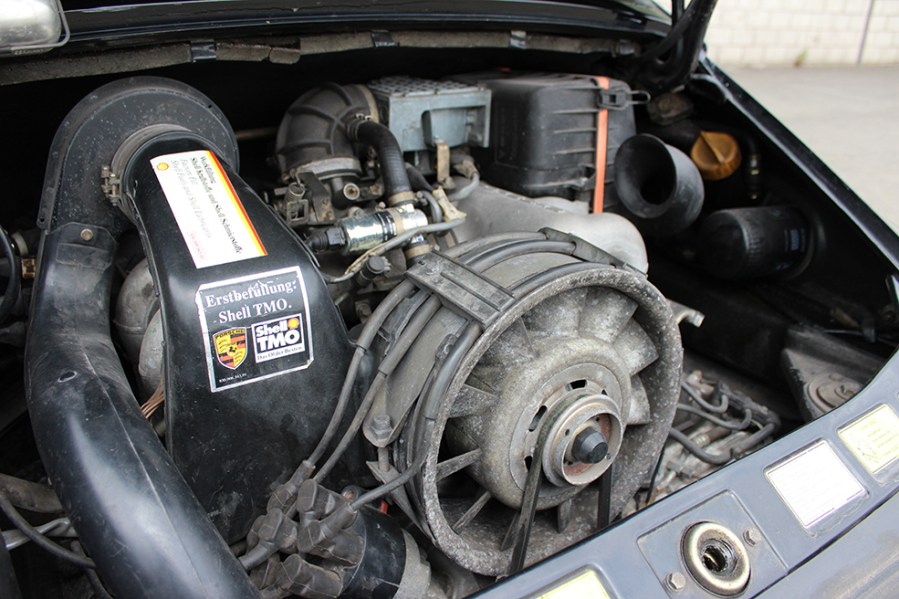
Suspension, steering and brakes
The Carrera 3.2’s suspension uses the well-proven recipe of MacPherson struts up front, semi-trailing arms at the rear and torsion bar springs at both ends. Given its simplicity there’s not a great deal to worry about, so just ensure that corrosion hasn’t started to nibble at mounting points, and that miserly owners haven’t skimped on replacement parts. It’s not hard to source good quality parts: new dampers will set you back around £250 each, for example.
The 911 is commonly modified by owners so be sure to check for bad aftermarket additions. In standard form the Carrera 3.2 rode and handled very well; it would be very easy to spoil that with ill-advised tinkering. Lastly, listen for clonks and rattles on the test drive that point to the need for an overhaul.
There’s no power-steering to worry about; while it feels a bit heavy at parking speeds, the rack and pinion setup should feel superbly feelsome and responsive once a bit of pace is added. Anything less will need investigation, but a well-maintained example shouldn’t be exhibiting any problems in this area.
The Carrera 3.2 uses a tried-and-tested braking setup that provides ample stopping power. No ABS, of course, so it’s all pleasingly simple and trouble-free as long as it’s not been neglected. You could tackle an overhaul yourself if keen, but sending the car to a specialist for new discs and pads all round will cost around £1200.
Finally, check that the car sits on good quality rubber, watch for aged tyres on little-used examples, and scrutinise the condition of the wheels. Whether you prefer the ‘teledial’ rims or the Fuchs items is a matter of personal taste but it’s the latter that prove most popular.
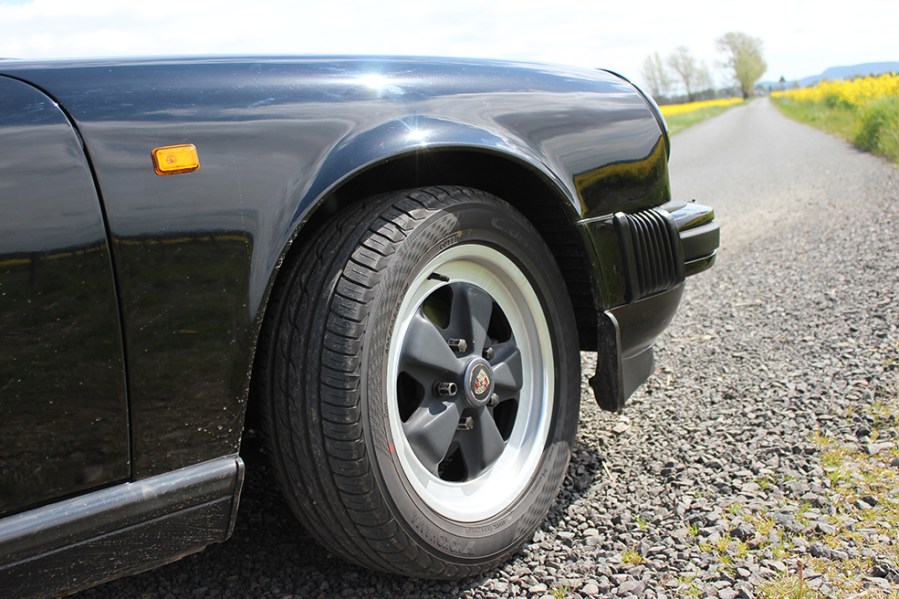
Interior and trim
The Carrera 3.2 cabin is simple and constructed from good quality materials, and underwent a subtle round of revisions compared to the preceding SC. These didn’t change the 911 cabin’s distinctive character, though, and the robust construction means well-cared for examples should still be in impressively good condition for a car that’s 40 years old. Check for any wear or damage to seat trim and plastic mouldings, however, as refurbishment costs can mount up.
Where the Carrera 3.2 differed from its predecessors was the level of luxury on offer, and wealthier buyers who got stuck into the options list could add the likes of leather trimmed and electrically-adjustable seats, air-conditioning and upgraded audio.
With that in mind, it’s advisable to spend plenty of time establishing the exact specification of the car you’re considering. And while a 911 of this era is nowhere near as gadget-laden as a modern Porsche, it’s still important to check that all of the equipment works as intended – reviving inoperative items can get expensive. Check that a failing battery or aftermarket alarm system isn’t causing electrical bother, too.
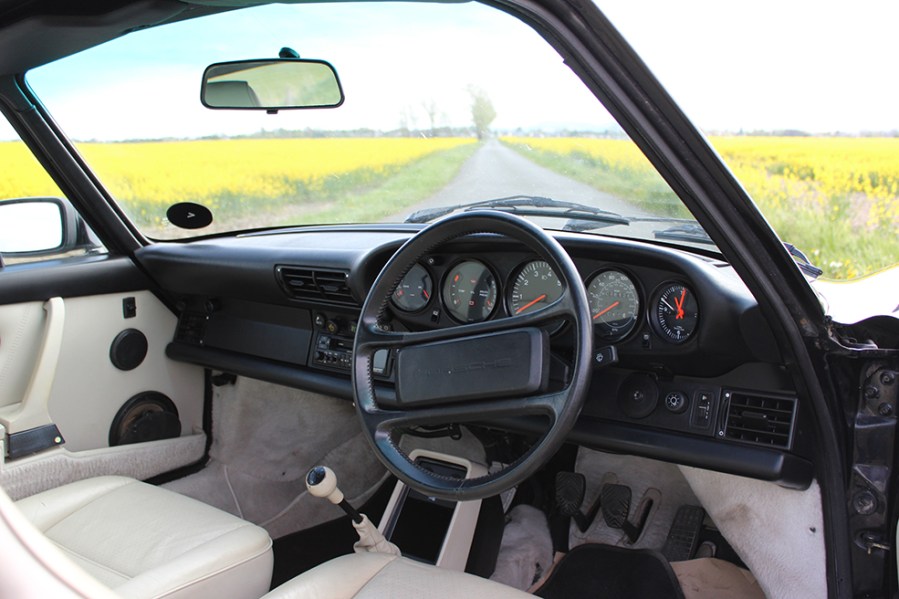
Verdict
The 911 has often been considered as rather an idiosyncratic sports car – in its earlier incarnations, at any rate – but for many enthusiasts that’s all part of the appeal. That the model has endured for six decades is little short of astonishing.
But there really is nothing else quite like a great 911, and driving a version such as the Carrera 3.2 is a very special experience, from the distinctive beat of the air-cooled engine to its unique ride and handling balance. The Carrera 3.2 was the final 911 before increasing levels of modernity and complexity arrived, which is the icing on the cake for many. It’s a very tempting proposition, but one that should be approached very much with the head as well as the heart.
Buying a good example is paramount when it comes to your financial wellbeing, so if you’ve any doubts you shouldn’t hesitate to engage the services of an expert before taking the plunge. Get it right, though, and you’ll be enjoying a truly iconic Porsche.
Not too long ago, a decent 3.2 Carrera could be had for a price in the mid-teens (or less), but its desirability nowadays means those times have long passed. A search of the classifieds reveals quite a variation in prices – with no obvious difference between early and later examples – but whatever your budget it’s condition that’s the crucial thing.
Consider a figure in the region of £30,000 as the starting point for a coupe in fair condition, but potentially pricey work could be needed. Adding another £10,000–15,000 bags a much nicer example, with a price in the mid-fifties likely for the best. Some can easily fetch upwards of £65,000, although we’ve seen late, low-mileage examples advertised for substantially more than that. Targa models are a little cheaper than coupes, with the Cabriolet offering the best value of all: good examples are valued at less than £35,000.

Porsche 911 Carrera 3.2 timeline
1984
The 911 SC is replaced by the Carrera 3.2, gaining a larger engine and more power. Coupe, Cabriolet and Targa models are available along with a ‘turbo-look’ option.
1985/86
Updates introduced including a four-spoke steering wheel, radio aerial incorporated in the windscreen, improved seats mounted 20mm lower and a revised ventilation system with new dashboard vents.
1987
G50 gearbox and hydraulic clutch fitted. Cabriolet models get an electric hood and the turbo-look is now known as the Carrera Supersport.
1988
Fuchs alloys made standard, and two new versions appear: the stripped-back Club Sport is 50kg lighter (just 189 are made), while the Anniversary celebrates 25 years of the 911. The latter features Diamond Blue metallic paint and a leather interior.
1989
The unusual 911 Speedster is launched, but this is also the last year of the Carrera 3.2.
‘G Series’ 911 is replaced by the 964-generation 911

